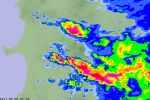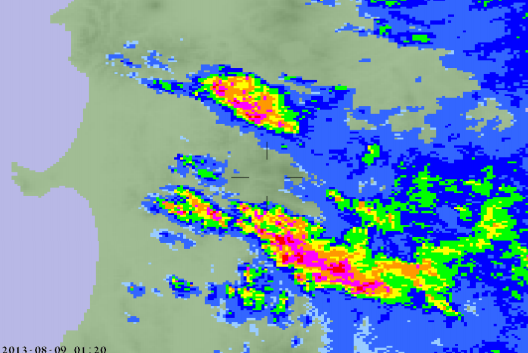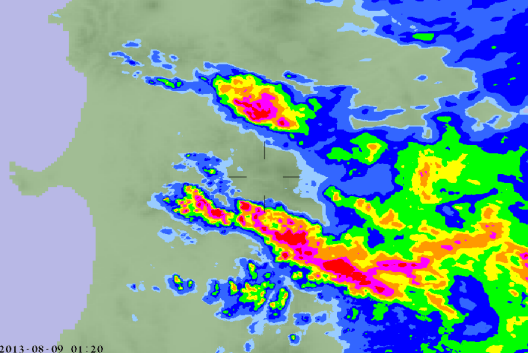Japan’s Meteorological Agency start new rain forecasting system. It’s 16 times as much accuracy as current system

New rain forecasting system to start
Date: Aug 6, 2014
Source: NHK World
Japan’s Meteorological Agency (JMA) will start using a new online forecasting system to track the strength of rainfall and movement of rain clouds. The system is capable of following rapid movement by rain clouds in a much more localized area.
The agency’s current forecasting system shows rainfall strength and the movement of rain clouds in a one kilometer square range.
The new system will have 16 times as much accuracy as the current system. It will be able to show cloud movement every quarter of a kilometer square, or 250 meters square. It can provide localized forecasts 30 minutes ahead of the weather and will do so every 5 minutes.
The system will employ land ministry’s radars and use data from about 9,000 rain gages set up by local municipalities to augment data from the agency’s own gages.
The system will go online 1 PM, Thursday and be available to the public on smartphones and the agency’s website.
Click images to enlarge.












Philippine Secretary of Science and Technology Mario G. Montejo and his delegation visit to Japan Meteorological Agency
Source: Japan Meteorological Agency (JMA)
Philippine Secretary of Science and Technology Mario G. Montejo and his delegation visited the Japan Meteorological Agency (JMA) on 27 June 2014.
JMA maintains favorable relations with the Philippine Atmospheric, Geophysics and Astronomical Services Administration (PAGASA) and the Philippine Institute of Volcanology and Seismology (PHIVOLCS), both of which are under the jurisdiction of the Philippine Department of Science and Technology (DOST).
The visitors met a JMA management group led by Noritake Nishide, the Director-General of the organization, and exchanged views on future collaboration in the field of meteorological services.
The attendees were given a tour of JMA’s operational centers and attended a series of presentations by JMA experts on the Agency’s cutting-edge activities and related matters in areas such as meteorological observation, weather forecasting and warnings, marine weather information, and information on earthquake, tsunami and volcanic activity.